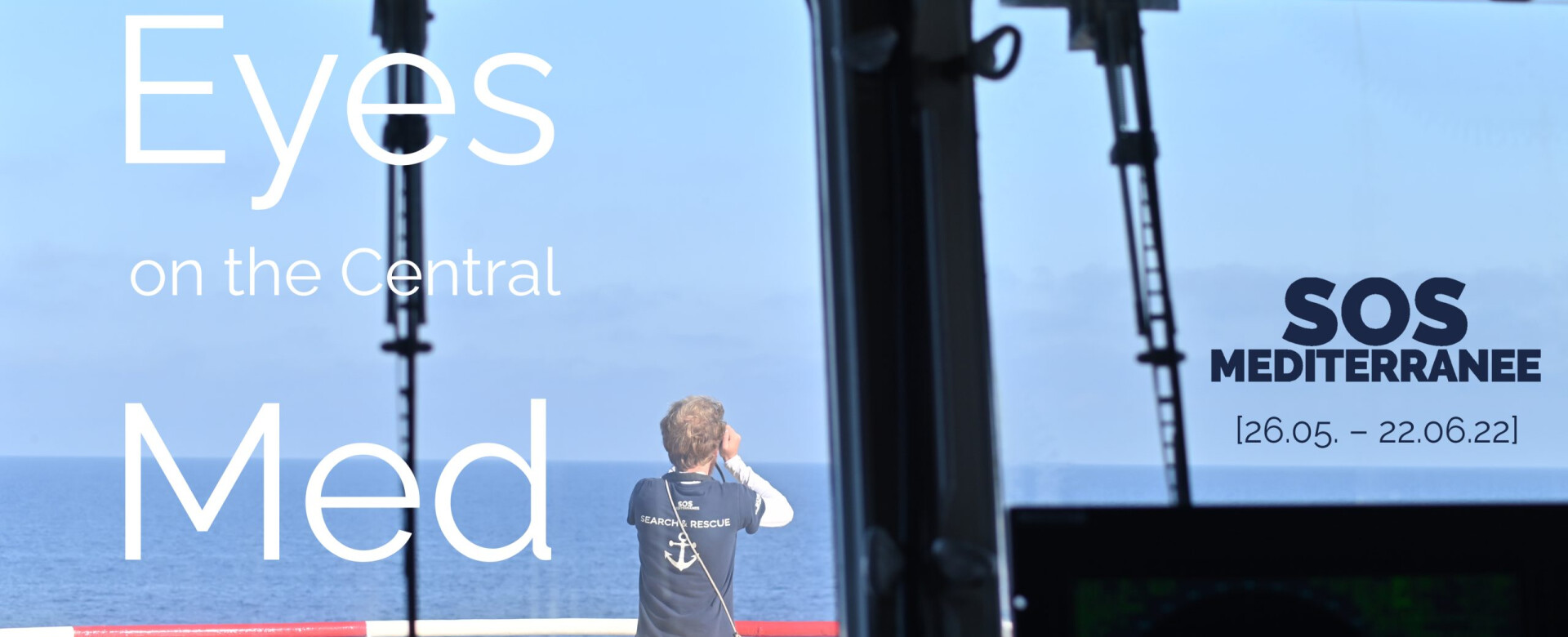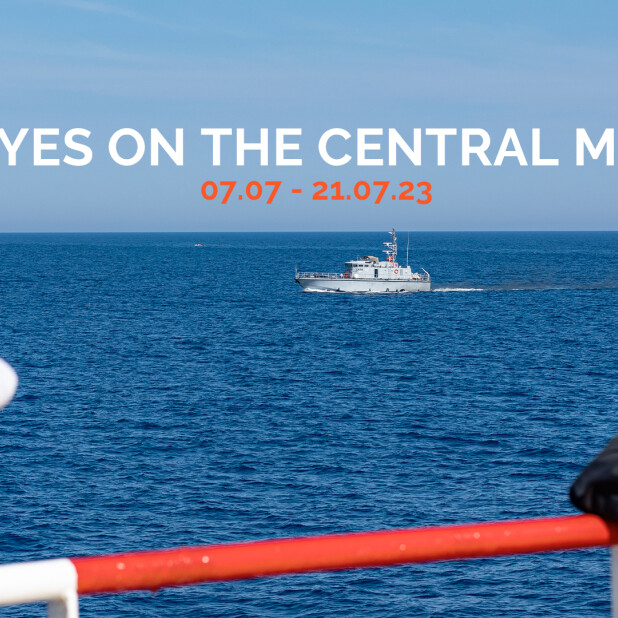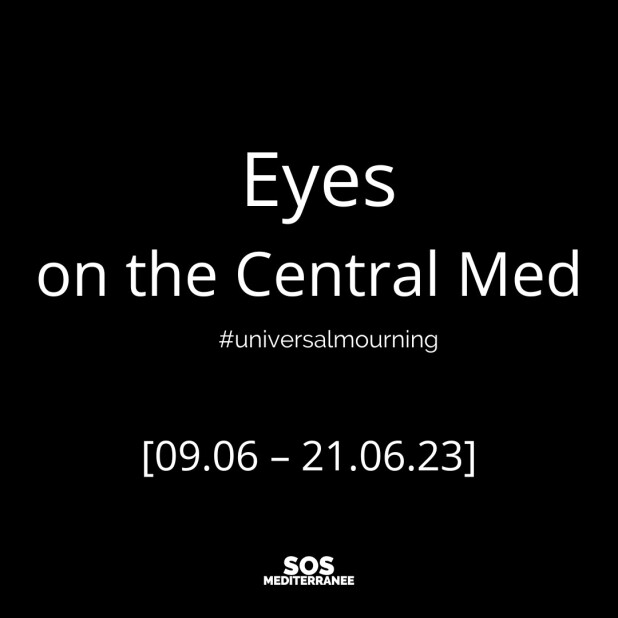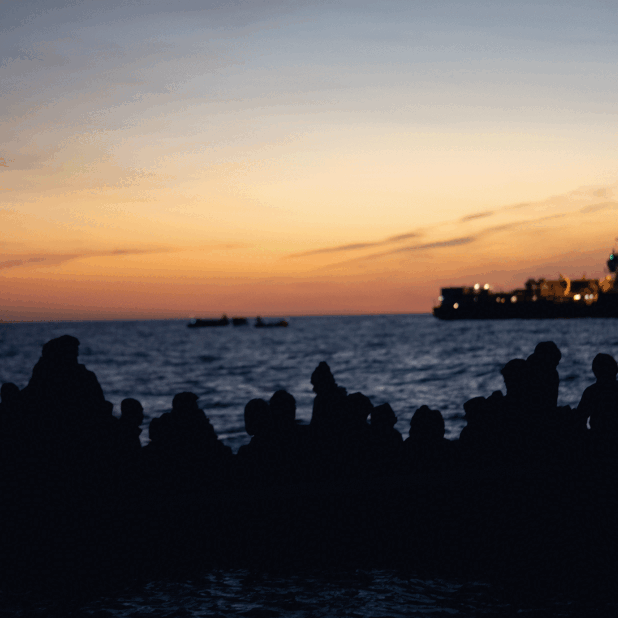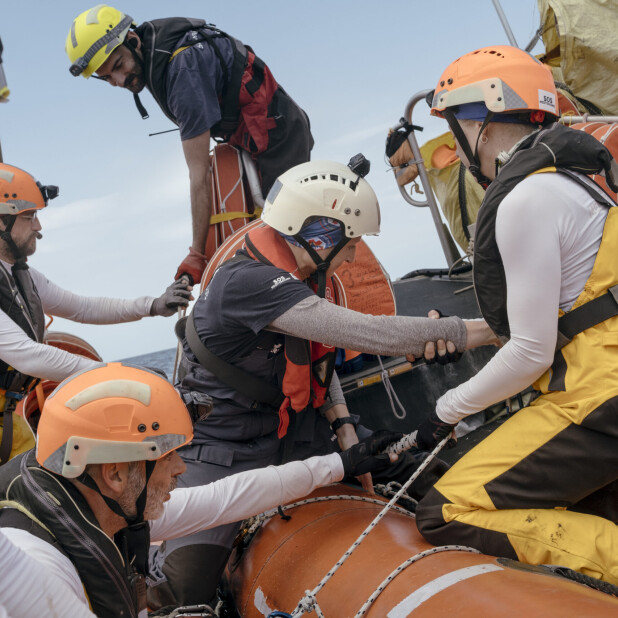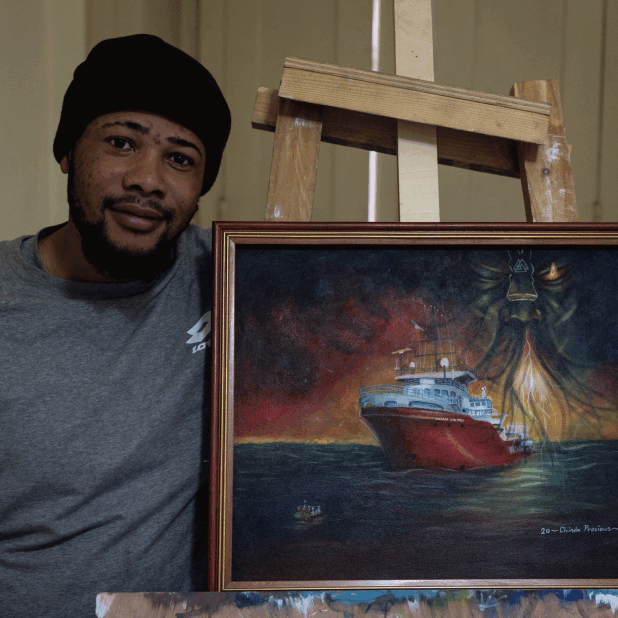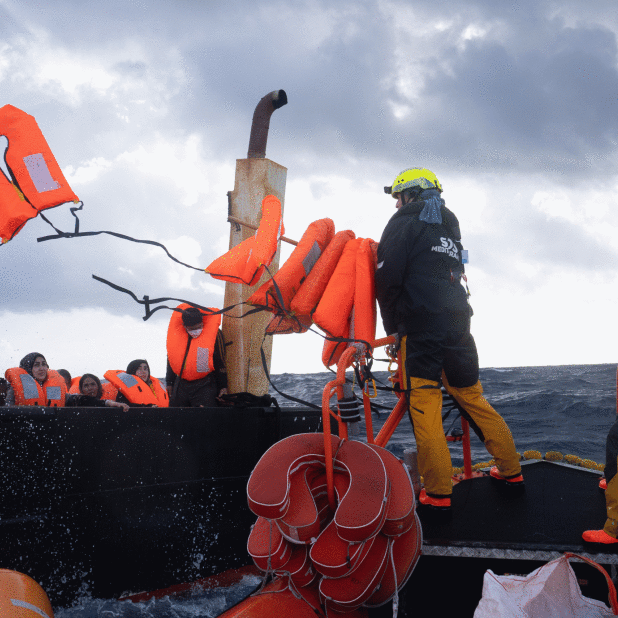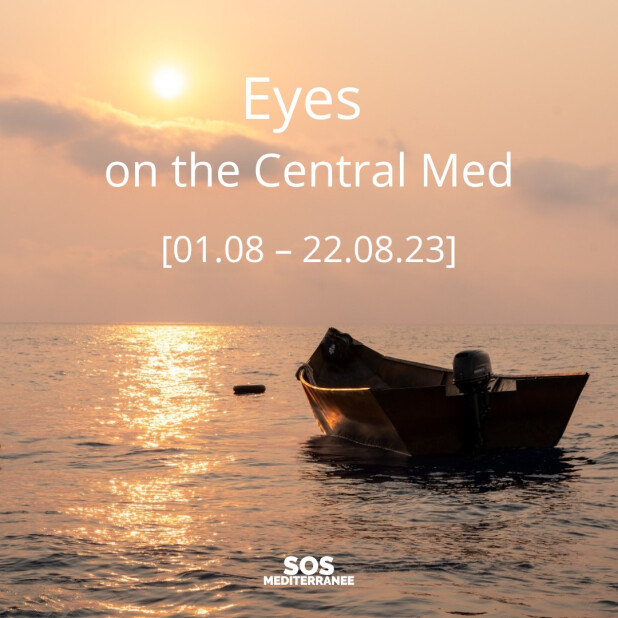
[26.05 – 22.06.22] The following publication by SOS MEDITERRANEE intends to shed light on events which unfolded in the central Mediterranean in the past two weeks. It is not intended to be exhaustive, but rather to provide a general update on maritime search-and-rescue-related matters occurring in the area we have been operating in since 2016, based on public reports by different NGOs, international organisations and the international press.
More than 1500 women, children and men assisted or rescued by civil rescue organisations
On May 25, the sailing boats Nadir (of the SAR NGO ResQship) and Astral (of the SAR NGO Open Arms) assisted and stabilised 110 people on an overcrowded wooden boat. According to ResQship, the European authorities requested that the survivors were rescued by the Tunisian coastguards. The Tunisian vessel approach caused panic among survivors. During the night, the wooden boat capsized, and people fell overboard. The crew on the Astral recovered 110 survivors on their sailing vessel and disembarked them in Lampedusa on May 26. According to the journalist Sergio Scandura, the authorities were aware about the distress case which occurred inside the Tunisian territorial waters but didn’t intervene while a Frontex aircraft was orbiting over the boat in distress.
On May 30, the new rescue ship of the NGO SAR Relief, Aurora, conducted its first rescue operation. 85 people rescued during the night were disembarked in Lampedusa on the same day.
Between June 2 and June 6, the Sea-Watch 3 crew rescued 356 people in six rescues. Three medical evacuations of survivors had to be urgently conducted before the designation of a place of safety in Pozzallo Sicily, on June 9. The disembarkation of the 344 remaining survivors onboard took three days and ended on June 11.
On June 5, the rescue ship Mare Jonio of the SAR NGO Mediterranea Saving Humans, rescued 29 people from a boat in distress. They reported the threatening presence of a Libyan coastguard patrol vessel in the vicinity. The day after, the Mare Jonio, with the support of the sailing vessel Imara, rescued 63 people from an overcrowded wooden boat. The Mare Jonio was authorised to disembark in Pozzallo Sicily, on June 8. The disembarkation process lasted three days.
On June 13, the Sea-Eye 4 rescued 63 people from a rubber boat in distress. On June 15, the crew rescued a total of 416 people in three different rescue operations. A fifth rescue operation of 76 people was conducted the same day, by night in difficult conditions. On June 17, four survivors had to be medically evacuated from the ship, including an 8-month pregnant woman. The day after, seven survivors were also evacuated due to severe medical conditions. On June 22, the ship got finally assigned Messina as a port of disembarkation for the 483 survivors onboard.
On June 14, the rescue ship Aita Mari of the SAR NGO Salvamento Maritimo Humanitario (SMH) performed the rescue of 11 people from a small wooden boat. On the following day, the crew rescued 17 people who had jumped at sea after being intercepted by Libyan coastguards, along with over 100 other people according to SMH. On June 16, 40 people were rescued in a third rescue operation. On June 16, a survivor was medically evacuated by the Italian coastguards. On June 15, the sailing boat Nadir assisted about 30 people in distress. The Italian coastguards then rescued the survivors and disembarked them in Lampedusa. On the same day, the Nadir encountered another distress case in the Maltese Search and Rescue Region, and provided assistance to 70 people until the arrival of the Italian authorities. On June 18, the Nadir assisted 45 other people with food, water and life jackets until the Aita Mari crew arrived and completed the rescue. 112 survivors are now onboard the Aita Mari, waiting for the designation of a place of safety.
On June 17, the rescue ship Louise Michel conducted a first rescue operation of 17 people. 96 other people were rescued in a second operation on June 18, with the support of the sailing boat Nadir. The same day, the crew of Louise Michel rescued an additional 52 people that were adrift at sea for three days.
On June 12, Sea Watch announced that their airplanes would start to fly back again over the Maltese Search and Rescue Region while continuing “to take action against the flight ban on entry into the Libyan Zone”. On June 15, the Seabird airplane for Sea-Watch spotted six boats in distress. It is unknown if they all could be rescued. One landed in Lampedusa according to Sea-Watch.
On June 18, following a distress alert sent by the Seabird, the merchant ship Aslihan rescued 95 people in the Maltese Search and Rescue Region.
On June 19, the 95 survivors rescued by merchant vessel Aslihan and the 165 people rescued by Louise Michel are transferred onboard the Sea-Watch 4. On June 21, a medical evacuation of one survivor was performed by the Italian coastguards. 312 survivors are currently onboard the Sea-Watch 4 waiting for a place of safety.
Thousands people forcibly returned to Libya
These past three weeks, according to International Organisation for Migrations, a total of 2,580 people were intercepted and forcibly returned to Libya by the Libyan coastguards: 787 from the 22nd to the 28th of May; 675 during the period from the 29th of May to the 4th of June; 528 during the period from the 5th to the 11th of June, and 590 during the period from the 12th to the 19th of June 2022. A total of 8,860 people were returned in 2022.
Repeated calls from the United Nations to “re-examine policies on returning migrants to Libya” while European Member States discuss relocation mechanism of survivors
On June 7, Vincent Cochetel, special envoy of the UNHCR for the Central Mediterranean situation, reiterated his call on European Member States to “re-examine policies on returning migrants to Libya” following the call of Stephanie Williams, UN Advisor in Libya, at the UN Security Council to “re-examine their policies that allow interception of refugees and migrants at sea and their return to Libya” as “Libya remains an unsafe place of disembarkation”.
On June 9 and 10, Ministries of Interior of the EU Member States and Schengen associated States gathered in Luxembourg for the latest Justice and Home Affairs (JHA) Council under the French Presidency of the EU. A voluntary agreement on a solidarity mechanism for the relocation of people rescued at sea was proposed by the French Presidency during this meeting, as part of a “gradual approach” to implement the new Pact on Migration and Asylum. The details of the agreement should be finalised by the end of the month (end of the French Presidency).
On June 20, the NGO Médecins Sans Frontières (MSF) released a new report describing the weakness of existing protection mechanisms for people trapped in Libya and call for the evacuation of the most vulnerable people to safe countries. The report describes a situation of arbitrary detention, torture and violence in Libya.
